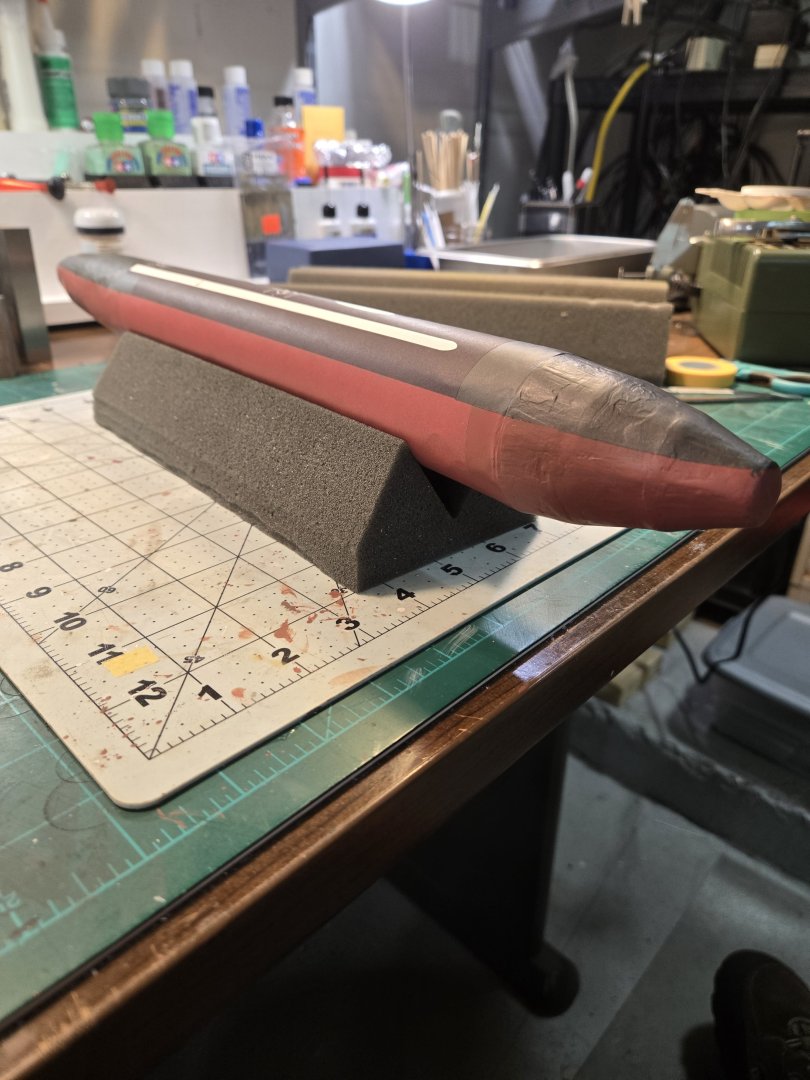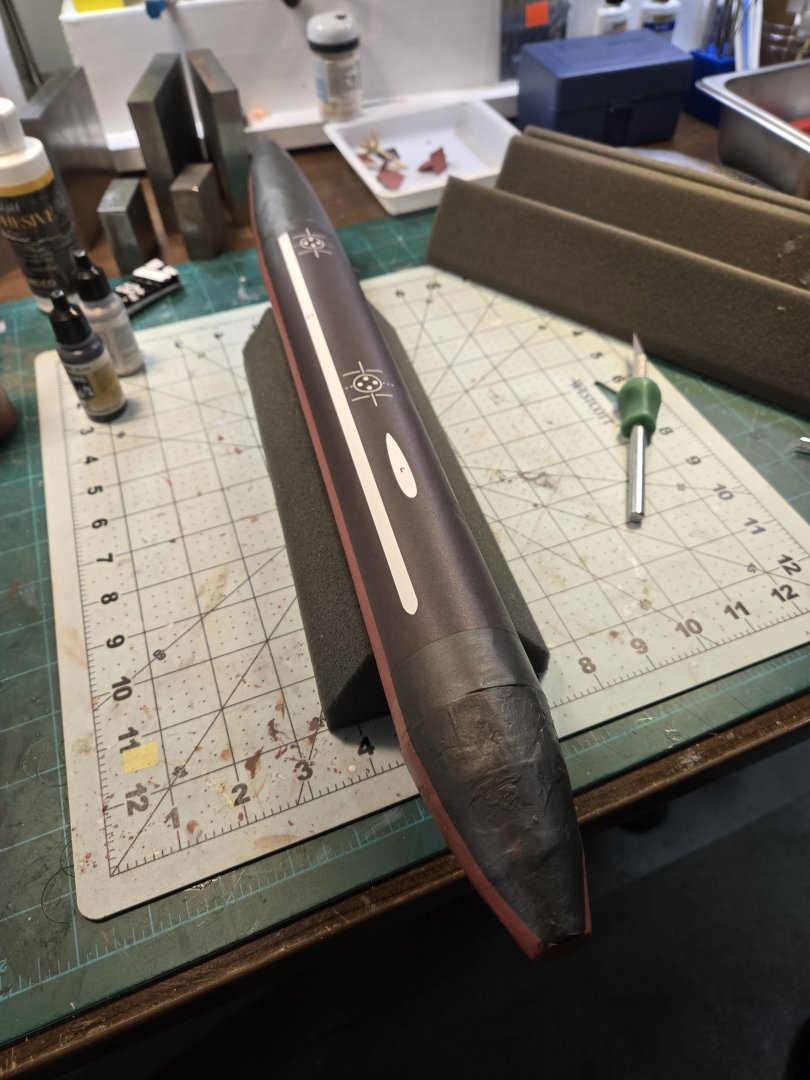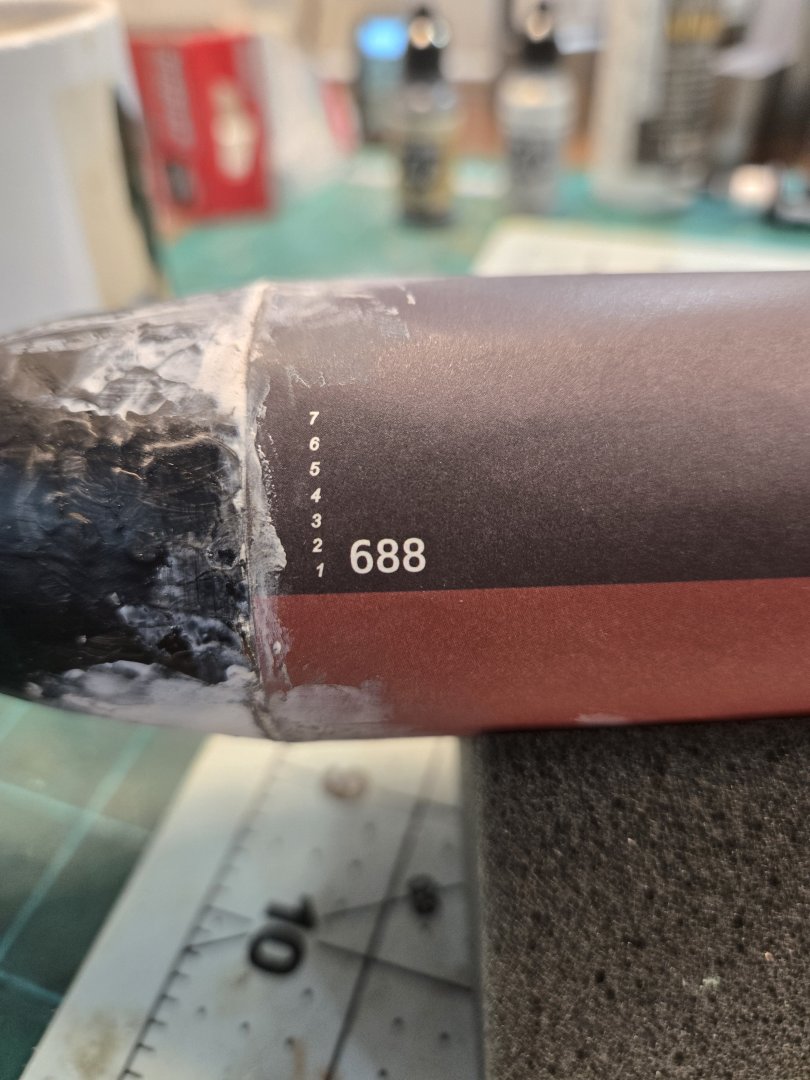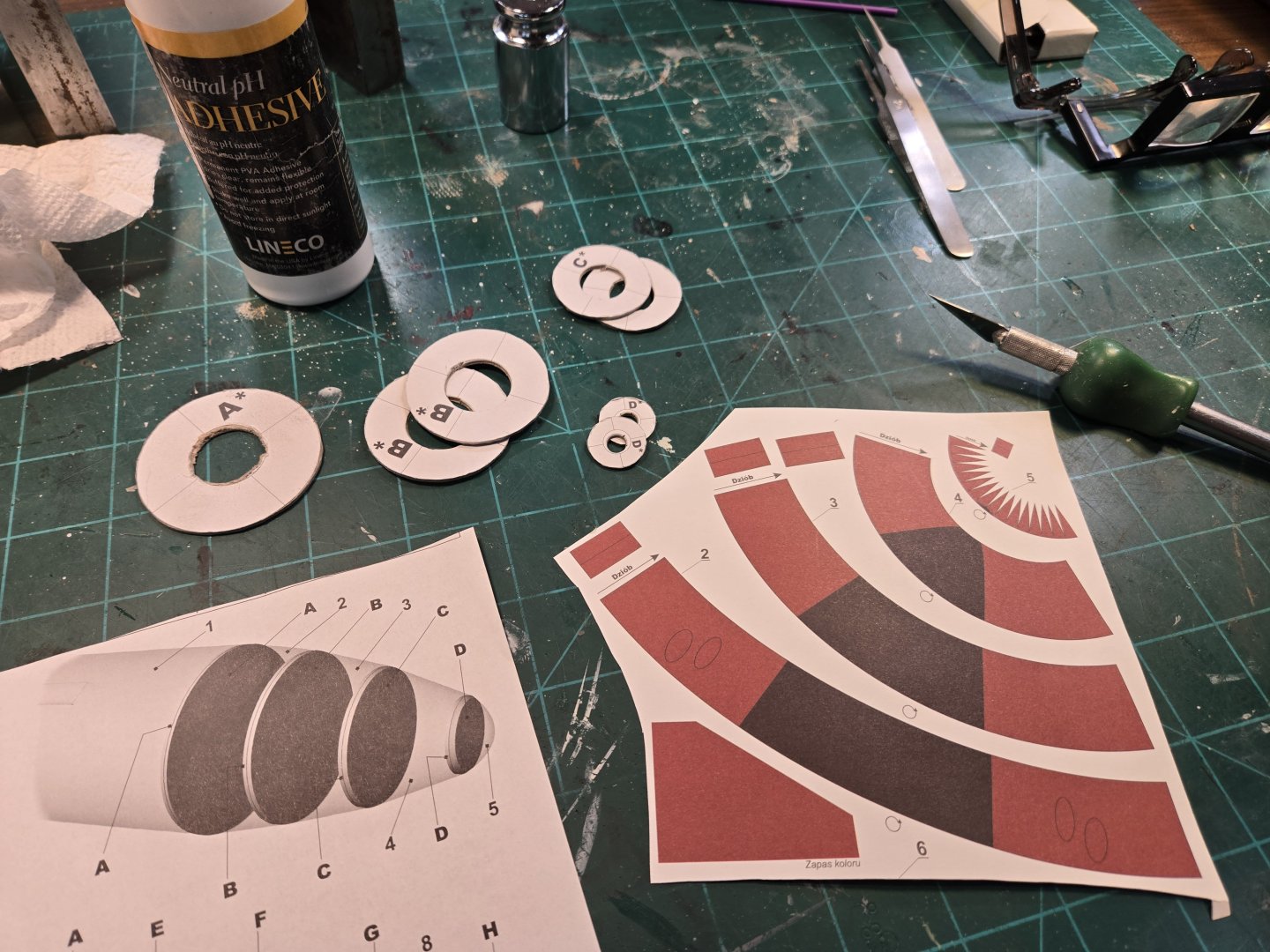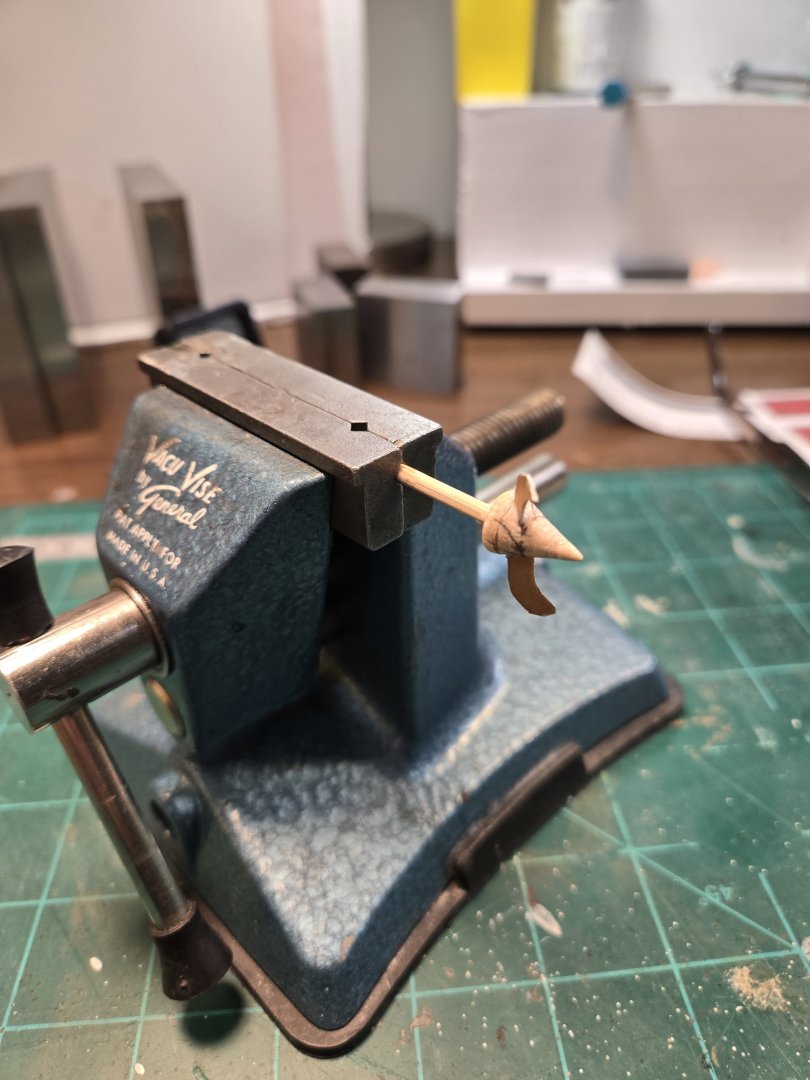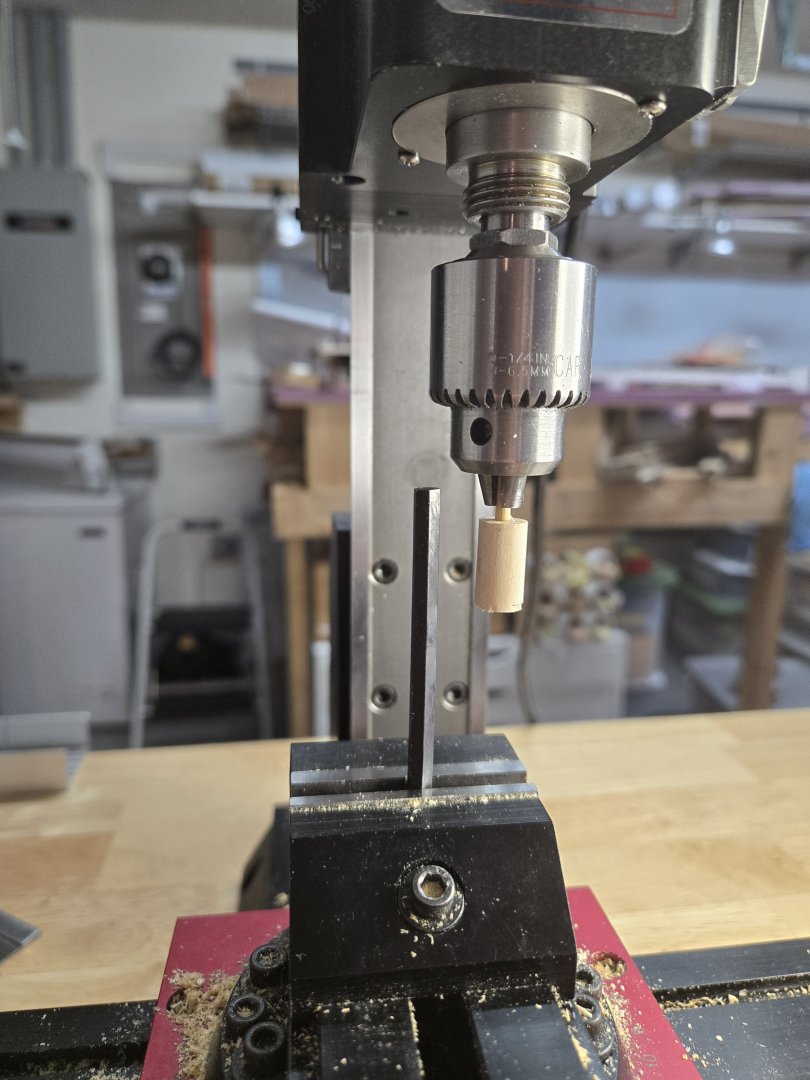-
Posts
169 -
Joined
-
Last visited
About BrianK
- Birthday 08/25/1964
Profile Information
-
Gender
Male
-
Location
Jacksonville. Florida, USA
-
Interests
Model ships for HO scale model railroading using mid 19th century to early 20th century sail and steam ships in the scale range from approximately 1/75 to 1/110 scales, with modifications as necessary. I don't count rivets but I do strive to maintain historical plausibility.... =)
Recent Profile Visitors
-
 BrianK reacted to a post in a topic:
Phantom by lraymo - Model Shipways - 1:96 scale - New York Pilot Boat
BrianK reacted to a post in a topic:
Phantom by lraymo - Model Shipways - 1:96 scale - New York Pilot Boat
-
 BrianK reacted to a post in a topic:
USS Los Angeles by BrianK - FINISHED - 1/200 - Kartonowy Swiat - CARD
BrianK reacted to a post in a topic:
USS Los Angeles by BrianK - FINISHED - 1/200 - Kartonowy Swiat - CARD
-
 Canute reacted to a post in a topic:
USS Los Angeles by BrianK - FINISHED - 1/200 - Kartonowy Swiat - CARD
Canute reacted to a post in a topic:
USS Los Angeles by BrianK - FINISHED - 1/200 - Kartonowy Swiat - CARD
-
 Canute reacted to a post in a topic:
USS Los Angeles by BrianK - FINISHED - 1/200 - Kartonowy Swiat - CARD
Canute reacted to a post in a topic:
USS Los Angeles by BrianK - FINISHED - 1/200 - Kartonowy Swiat - CARD
-
 Canute reacted to a post in a topic:
USS Los Angeles by BrianK - FINISHED - 1/200 - Kartonowy Swiat - CARD
Canute reacted to a post in a topic:
USS Los Angeles by BrianK - FINISHED - 1/200 - Kartonowy Swiat - CARD
-
 Canute reacted to a post in a topic:
USS Los Angeles by BrianK - FINISHED - 1/200 - Kartonowy Swiat - CARD
Canute reacted to a post in a topic:
USS Los Angeles by BrianK - FINISHED - 1/200 - Kartonowy Swiat - CARD
-
 Canute reacted to a post in a topic:
USS Los Angeles by BrianK - FINISHED - 1/200 - Kartonowy Swiat - CARD
Canute reacted to a post in a topic:
USS Los Angeles by BrianK - FINISHED - 1/200 - Kartonowy Swiat - CARD
-
 Canute reacted to a post in a topic:
USS Los Angeles by BrianK - FINISHED - 1/200 - Kartonowy Swiat - CARD
Canute reacted to a post in a topic:
USS Los Angeles by BrianK - FINISHED - 1/200 - Kartonowy Swiat - CARD
-
 Canute reacted to a post in a topic:
USS Los Angeles by BrianK - FINISHED - 1/200 - Kartonowy Swiat - CARD
Canute reacted to a post in a topic:
USS Los Angeles by BrianK - FINISHED - 1/200 - Kartonowy Swiat - CARD
-
 Canute reacted to a post in a topic:
USS Los Angeles by BrianK - FINISHED - 1/200 - Kartonowy Swiat - CARD
Canute reacted to a post in a topic:
USS Los Angeles by BrianK - FINISHED - 1/200 - Kartonowy Swiat - CARD
-
 Canute reacted to a post in a topic:
USS Los Angeles by BrianK - FINISHED - 1/200 - Kartonowy Swiat - CARD
Canute reacted to a post in a topic:
USS Los Angeles by BrianK - FINISHED - 1/200 - Kartonowy Swiat - CARD
-
 Canute reacted to a post in a topic:
USS Los Angeles by BrianK - FINISHED - 1/200 - Kartonowy Swiat - CARD
Canute reacted to a post in a topic:
USS Los Angeles by BrianK - FINISHED - 1/200 - Kartonowy Swiat - CARD
-
Thanks for all the thumbs up guys. Chris none of the three kits below have butt joints that I am aware of. 😃 I will put one in the suitcase this spring to have something to do at the farm outside Bangkok. Regards, Brian
- 37 replies
-
 BrianK reacted to a post in a topic:
USS Los Angeles by BrianK - FINISHED - 1/200 - Kartonowy Swiat - CARD
BrianK reacted to a post in a topic:
USS Los Angeles by BrianK - FINISHED - 1/200 - Kartonowy Swiat - CARD
-
The sail was next with final touch up painting to hide glue lines and fix the masking tape leak throughs. So its finished. I am not sure which skills need more improving, my bulkhead seams or my putty work. I will say I thought this would be an easier model but it turned out to be hard. Any deviation from symmetry in a model like this shows up easily (I reattached the planes several times) and there are not a lot of details to distract the eye and hide the flaws! 😃 I did learn a lot and this kind of project is humbling and inspiring. I am taking at least one card model to Thailand in May and will have 3 months there to work on it. 😃 BTW, former USS Helena Captain Paul Dinius, (mentioned above) was kind when I showed him the model. He said there is no way he would have the patience to tackle something like this. When I complained about the dents and poor putty job. He said it looks about right for a working boat that has been in service for over 40 years.....
- 37 replies
-
or some reason I did the display stand here using 1mm cardstock and redid the name plate changing from Los Angeles to Helena.
- 37 replies
-
- 37 replies
-
Hull painting was next. Tamiya masking tape and brush painting. I added silver to black to dull down the bow and stern to match the paper 'black' color of the main hull. A mix of caboose red and brown and white got the anti-fouling color pretty close.
- 37 replies
-
The decals were custom done on a laserprinter using white waterslide paper. I did the depth marks and boat numbers (725 for the USS Helena) and added the tomahawk tubes also for the Helena. Looking back I wish I had spent more time getting the black color right. Graying it down would have blended the decals better.
- 37 replies
-
To fix the seams in the stern and bow sections that were driving me crazy I decided on a radical solution. I would putty and paint both the bow and stern sections. Having worked briefly around subs at Newport in 1994-1995, I knew that the hull paint job on a working sub showed a patchwork of new and old paint in different spots and I decided to exploit that. I would get the paint job close to the main hull, without repainting the main hull, which was in good shape since it was one piece. I used Vallejo plastic putty, which is an acrylic resin and cleans up with water. The paints were brushed on Vallejo followed by a rattle can flat overspray.
- 37 replies
-
But before I worked on solving the problem with the stern tube assembly, I decided to build the bow tube sections. I had cut out the bulkheads last year so this effort involved cutting out the casing pieces and gluing up the tube sections.
- 37 replies
-
I integrated the stern tube sections next. This task was very humbling and made me realize I have a long way to go to become a great card modeler. As I glued the sections together the imperfections at the joints started to show. I would need to find a solution.....
- 37 replies
-
I decided to work on the stern since I had completed the 4 stern tube sections the year before. So I made the stern vertical and horizontal planes. I used some scrap 1mm cardstock to create the curve of the surface of the planes. It was easier than relying on the included bulkhead piece. Steel bunch blocks held the thin edges together while drying. There are 4 stern planes but the horizontal planes have vertical rudders at the end too. As it turned out, I did not mount the planes until much later, after the entire hull was built. The planes are delicate and I knew I would damage them if I installed them too early.
- 37 replies
-
Next up was the propeller flukes. I used the paper ones from the kit. Figuring out where they go was the fun part. I reasoned that the 7 flukes are equidistant apart at both ends of their mount points so I drew a circle down low on the hub to represent where the fluke mounts start. I measured the circumference of the circle, and divided by 7. That gave me the fluke spacing for the lower mount point. I ticked off the 7 marks on the circle with a pencil. You can see the circle in the first picture. I estimated the pitch of the flukes and figured out where to draw a second circle around the hub for the upper mount point of each fluke. Again dividing by 7 flukes gave me the spacing for THAT circle. All that was left was to use the pitch to put the first tick mark on the upper circle. The 6 other tick marks followed. I glued the flukes with white glue. A helping hand alligator clip acted as a support while each fluke dried. I then air brushed the finished propeller with gold paint (that looks brass-like). After the propeller was done, I cut off the bamboo skewer with a Zona razor saw.
- 37 replies
-
The first thing I picked to tackle with the project restart was the propeller hub. It was the last thing I built last year in the winter of 2024 and I was not happy with it. The hub of the propeller was a small paper cone. There were 7 marks on the cone where the 7 fluke of the propeller go. But if you do not roll the cone of the hub perfectly and glue the edges exactly then there will be a gap in the arrangement of the flukes. I had not done a good enough job and so I was unhappy with my hub. You can see it in the first photo. I decided to betray the card modeler's creed (give me card or give me death....or something like that) and use wood to make a replacement hub. A bamboo skewer glued into a 1/4" diameter piece of dowel created the blank. My Sherline mill and some Godhand spin blade chisels mounted in a pin vise did the work. The tool rest is an Allen hex key secured in the mill vise. I worked slowly and compared the wood version with the paper version to get the size right.
- 37 replies
-
I stored the parts of the submarine in a plastic box and started by refamiliarizing myself with the project and where I left off.
- 37 replies
-
Ok its been a year but I got back to work on this build. My humble apologies for the delay. Over the next two years I will be retiring to Thailand (my wife's homeland) and will have additional interruptions into modeling in general as we move our lives and hobbies to the other side of the world, but hopefully the future delays will not be so extreme.... Truth be told and spoiler alert, I fished the build of the USS Los Angeles (as the USS Helena) and the posts below are the documentation of the process. Skip to the end if you want to see how it turned out. 😃
- 37 replies
-
I will be selling part of my collection of model ship kits at Modelpalooza in Orlando Florida on October 12-13, 2024. I won't be there Friday the 11th (its a 3-day event), and hopefully they won't cancel because of the hurricane. https://www.ipmsorlando.org/modelpalooza-home.html Come by tables 24 and 25 in the vendor area. I am downsizing my private collection before I retire and move. I should have about 30 ship kits priced to sell, some old, some new, some rare, some wood, some plastic: Sterling, MSW, Marine Model Company, Scientific, Revell, Lindberg, Pyro, Artesania Latinas, and Constructo. Hope to see you there! Brian
About us
Modelshipworld - Advancing Ship Modeling through Research
SSL Secured
Your security is important for us so this Website is SSL-Secured
NRG Mailing Address
Nautical Research Guild
237 South Lincoln Street
Westmont IL, 60559-1917
Model Ship World ® and the MSW logo are Registered Trademarks, and belong to the Nautical Research Guild (United States Patent and Trademark Office: No. 6,929,264 & No. 6,929,274, registered Dec. 20, 2022)
Helpful Links
About the NRG
If you enjoy building ship models that are historically accurate as well as beautiful, then The Nautical Research Guild (NRG) is just right for you.
The Guild is a non-profit educational organization whose mission is to “Advance Ship Modeling Through Research”. We provide support to our members in their efforts to raise the quality of their model ships.
The Nautical Research Guild has published our world-renowned quarterly magazine, The Nautical Research Journal, since 1955. The pages of the Journal are full of articles by accomplished ship modelers who show you how they create those exquisite details on their models, and by maritime historians who show you the correct details to build. The Journal is available in both print and digital editions. Go to the NRG web site (www.thenrg.org) to download a complimentary digital copy of the Journal. The NRG also publishes plan sets, books and compilations of back issues of the Journal and the former Ships in Scale and Model Ship Builder magazines.

















